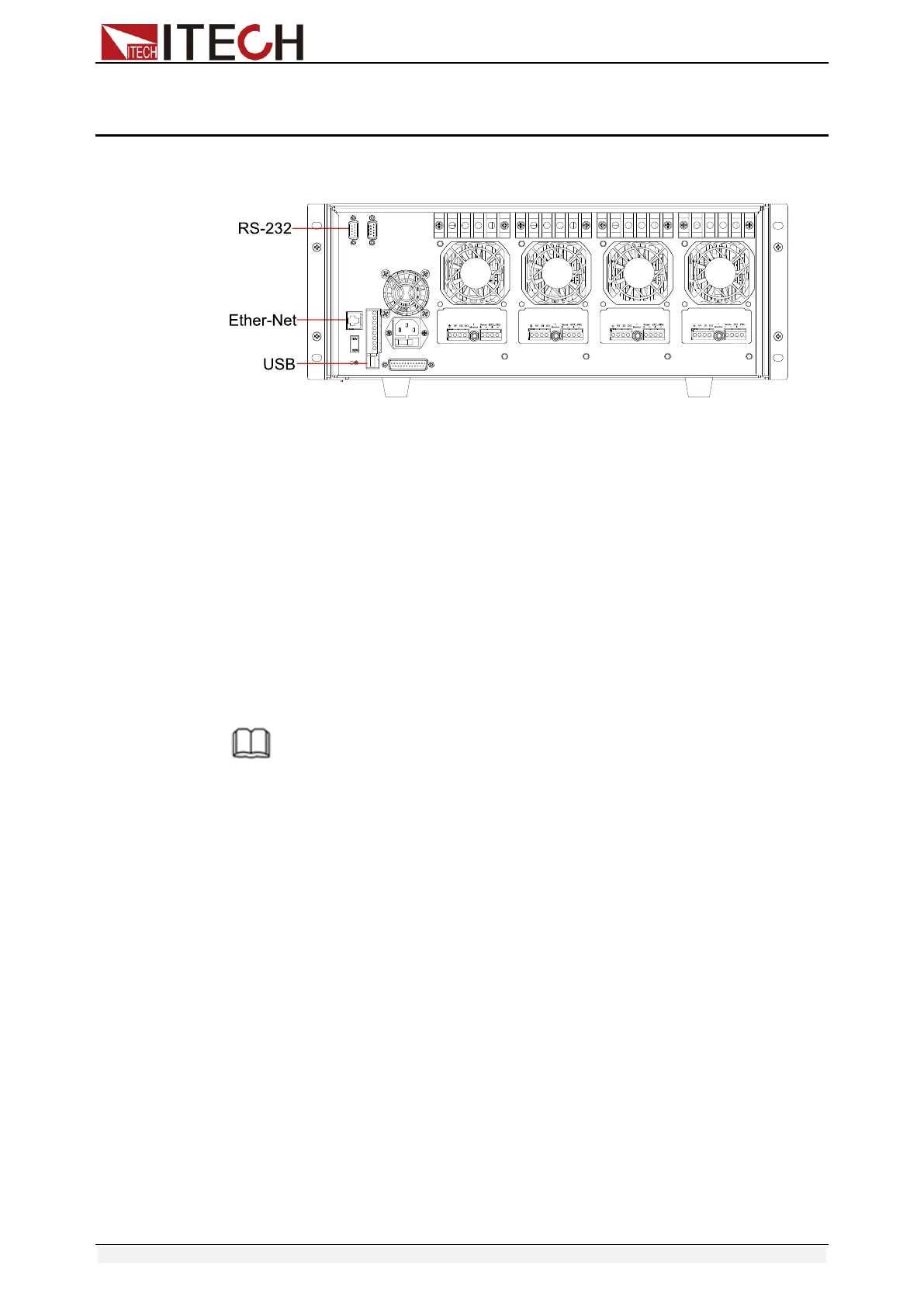Remote operation
Copyright © Itech Electronic Co., Ltd. 77
Chapter6 Remote operation
There are three kinds of communication interfaces: Ether Net, USB, RS232.
The user can choose any one of them to communicate with PC.
Figure 6-1IT8700 rear panel communication interface (take example of IT8702P)
6.1 RS232 interface
RS232 interface:use a cable with two COM interface(DB9)to connect load
and PC. It can be activated by <Shift> + <System> key on the front panel.
NOTE: There’re two COM interface on the rear panel of IT8700:the left 9-pin
COM interface is RS232 communication interface;the right 9-pin COM serial
port connection(extended keyboard interface). All SCPI commands are
available through RS-232 programming. The EIA RS-232 standard defines the
interconnections between data terminal equipment ( DTE ) and data
communications equipment(DCE). The electronic load is designed to be a DTE.
It can be connected to another DTE such as a PC COM port through a null
modem cable
NOTE
The RS-232 settings in your program must match the settings specified in the front panel
system menu. Press <Shift> + <System>key if you need to change the settings. You can
break data transmissions by sending a ^C or ^X character string to the multimeter. This
clears any pending operation and discards any pending output.
RS-232 data format
The RS-232 data is a 10-bit word with one start bit and one stop bit. The
number of start and stop bits is not programmable. However, the following
parity options are selectable using the front panel<Shift> + <System> key.
Parity options are stored in non-volatile memory.
Baud rate
The front panel <Shift> + <System> key allows the user to select one of the
following baud rates, which is stored in non-volatile memory: 4800 9600 19200
38400 57600 115200.
RS-232 flow control
The RS-232 interface supports the following flow control options that are
selected using the front panel <Shift> + <System>key. For each case, the
electronic load will send a maximum of five characters after hold-off is asserted
by the controller. The electronic load is capable of receiving up to fifteen
additional characters after it asserts hold-off.

